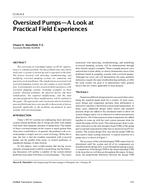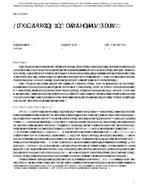The Supermarket Refrigeration Systems Project was structured to investigate and develop new highly energy-efficient supermarket refrigeration systems. A supermarket refrigeration system that included unequal parallel compressors, a condenser with floating head-pressure control, and a microprocessor-based electronic control system was analyzed, designed, and tested. The total system capacity is 35 hp (26.10 kW), consisting of three compressors of 5, 10, and 20 hp (3.73, 7.46, and 14. 91 kW), which were determined to be the optimum number and capacity distribution. A theoretical comparison to conventional supermarket refrigeration systems revealed that the three unequal parallel compressor system with R-12 exhibited a maximum annual energy savings of 29,100 kWh, or 26%, and with R-502 exhibited a maximum annual energy savings of 20,100 kWh, or 15%.
A compressor capacity control algorithm was designed to select the optimum compressor combination for each operating condition by matching compressor capacity to refrigeration load. A microprocessor system was selected for system control and data acquisition. The economic analysis revealed that for a payback period of three years or less, an added microprocessor-based electronic control system that costs between $500 and $1500, depending on the refrigerant used and the refrigeration load, is acceptable.
Testing was performed on the unequal parallel compressor system over a refrigeration load range of 78,000 to 160,000 Btu/hr (22.86 to 46.88 kW). For refrigerant R-12, the increase in the energy efficiency ratio (EER) for the microprocessor-based electronic control system, as compared to the mechanical pressure control system, ranged from 9.8 to 14.4%.
Citation: Symposium, ASHRAE Transactions, Volume 88, Part 2, Toronto, Canada
Product Details
- Published:
- 1982
- Number of Pages:
- 17
- File Size:
- 1 file , 12 MB
- Product Code(s):
- D-TO-82-10-4


